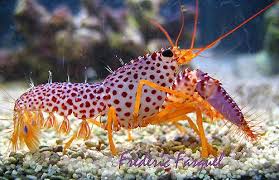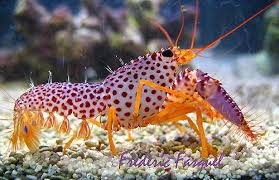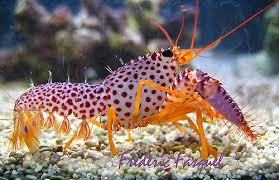Debelius Reef Lobster
Debelius Reef Lobster
check_circle Fast Shipping
check_circle Quality Products
check_circle Affordable Price
Reach out to us on ''available to order'' items via WhatsApp or email
Out of stock
Couldn't load pickup availability

Debelius Reef Lobster
package_2
Product Description
Product Description
Debelius Reef Lobster Overview
-
Common Name: Debelius Reef Lobster
-
Scientific Name: Enoplometopus debelius
-
Also Known As: Purple Reef Lobster, Debelius’ Lobster
-
Family: Enoplometopidae (Reef lobsters – not true lobsters like Panulirus)
-
Origin: Indo-Pacific – primarily around Indonesia and the Philippines
-
Size: Up to 4 inches (10 cm)
-
Lifespan: 5–8 years (sometimes longer in stable aquariums)
🌈 Appearance
-
Color: Deep purple to violet body with small white spots
-
Claws: One pair of prominent front claws (unlike true lobsters, which have two large claws)
-
Antennae: Long and white, often visible even when the lobster is hiding
-
Body Structure: Similar to a squat shrimp or mini-lobster with one enlarged claw
🏝️ Natural Habitat
-
Found in crevices, caves, and rock overhangs in reef and rocky areas
-
Nocturnal and solitary — hides most of the day and emerges at night to scavenge
🐠 Aquarium Care
Tank Requirements:
-
Minimum Tank Size: 30 gallons (larger if housing multiple hiding animals)
-
Aquascape:
-
Plenty of live rock with crevices and tunnels
-
Low lighting during acclimation helps reduce stress
-
Strong hiding spaces are essential — it will pick a cave and defend it
-
Water Parameters:
-
Temperature: 74–80°F (23–27°C)
-
pH: 8.1–8.4
-
Salinity: 1.023–1.025
-
Ammonia/Nitrite: 0 ppm
-
Nitrate: <20 ppm preferred
-
Water Quality: Needs clean, stable water
🍽️ Diet
-
Feeding Type: Scavenger / Omnivore
-
Diet:
-
Meaty foods like mysis shrimp, krill, clams, or squid
-
Sinking pellets or wafers
-
May eat leftover food from fish feedings
-
-
Feeding Frequency: 3–4 times a week (more often if few fish are in the tank)
-
Will come out at night to forage
🤝 Behavior & Compatibility
-
Temperament: Semi-aggressive and territorial
-
Reef Safe: ✅ With caution
-
Will not harm corals
-
May attack small fish or shrimp that wander too close to its den
-
Best kept in larger tanks with sufficient territory
-
-
Tankmates:
-
Best with medium to large peaceful or semi-aggressive fish
-
Avoid small gobies, shrimp, and bottom-dwellers that might enter its cave
-
Do not keep with other lobsters or similar species — will fight
-
✅ Pros
-
Gorgeous and unique appearance
-
Reef-safe with corals
-
Helps clean up leftover food
-
Hardy and long-lived in good conditions
❌ Cons
-
Very reclusive — may not be seen often
-
Can be aggressive toward small fish, shrimp, or other lobsters
-
Nocturnal — may only come out after lights go off
-
Can rearrange rockwork or shift corals while digging
💡 Tips for Success
-
Provide multiple caves or overhangs
-
Feed after lights out to encourage activity
-
Avoid mixing with:
-
Cleaner shrimp
-
Fire shrimp
-
Small gobies or dartfish
-
-
Cover all pump and overflow intakes — they can get stuck while exploring
Summary
| Category | Details |
|---|---|
| Difficulty | Moderate |
| Temperament | Semi-aggressive / territorial |
| Max Size | 4 inches (10 cm) |
| Tank Size (Min) | 30 gallons |
| Diet | Omnivore / Scavenger |
| Reef Safe | Yes (with caution) |
| Compatibility | Best kept alone |
| Active Time | Nocturnal |
| Burrower | Yes |


